Let’s get to know some common quilting terms
- Selvedge
- Width of Fabric (Also known as WOF)
When reading quilt pattern instructions, these terms tell you which direction to lay and cut your fabric.
I have some great photos and some easy guidelines to help you:
- Find the selvedge
- Understand how to fold WOF (width of fabric)
Plus, I have some bonus photos and explanations about
- the weave of fabric
- and the bias
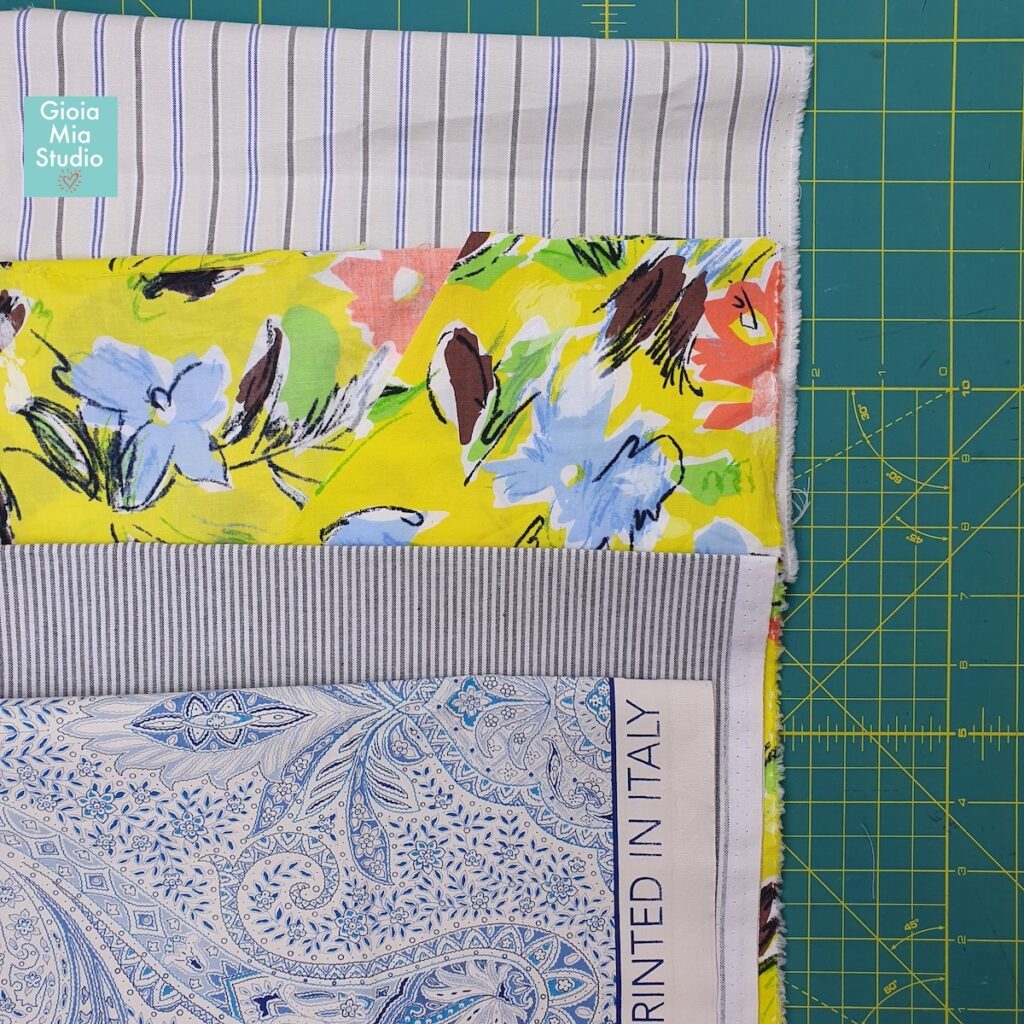
Where to find the selvedge
When fabric is woven, a reinforced weave is put on the edge. This is the selvedge. The selvedge of your fabric is there to protect the fabric from fraying or unraveling. It is usually about 1inch or less in width.
There are some easy ways to find the selvedge on your fabric.
- Slide your fingers to the edge of the fabric. The selvedge feels thicker than the rest of the fabric, perhaps even firm.
- Sometimes there are teeny tiny dotted holes around this thicker edge
- Sometimes companies print their name on the selvedge. (This is the easiest way to find the selvedge!)
Selvedge? or Selvage?
quick tip
Some people say selvedge.
Some people say selvage.
Each means the same thing.
The use depends on where you are in the world.

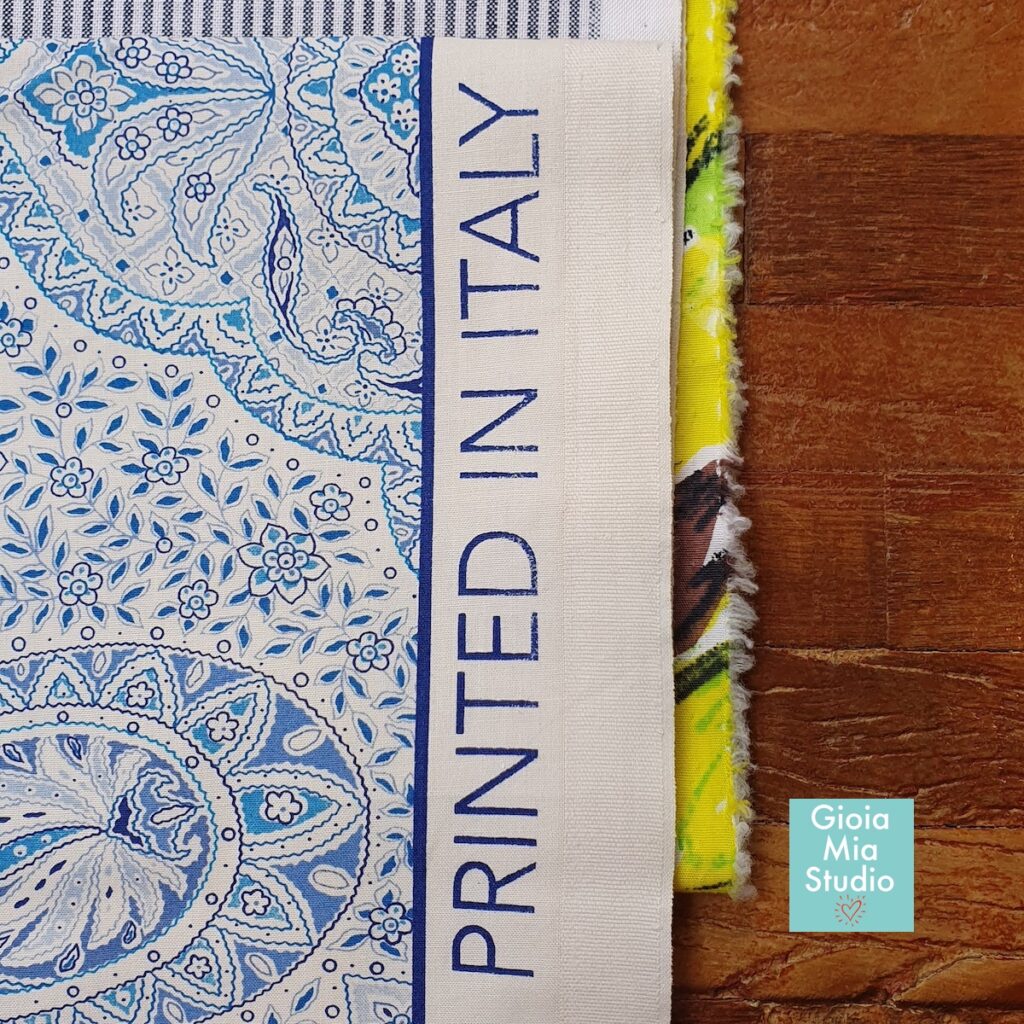
Width of Fabric or WOF
I’m not sending an SMS. haha! Width Of Fabric is often written in quilt patterns as “WOF”. From selvedge edge to selvedge edge is the width of the fabric.
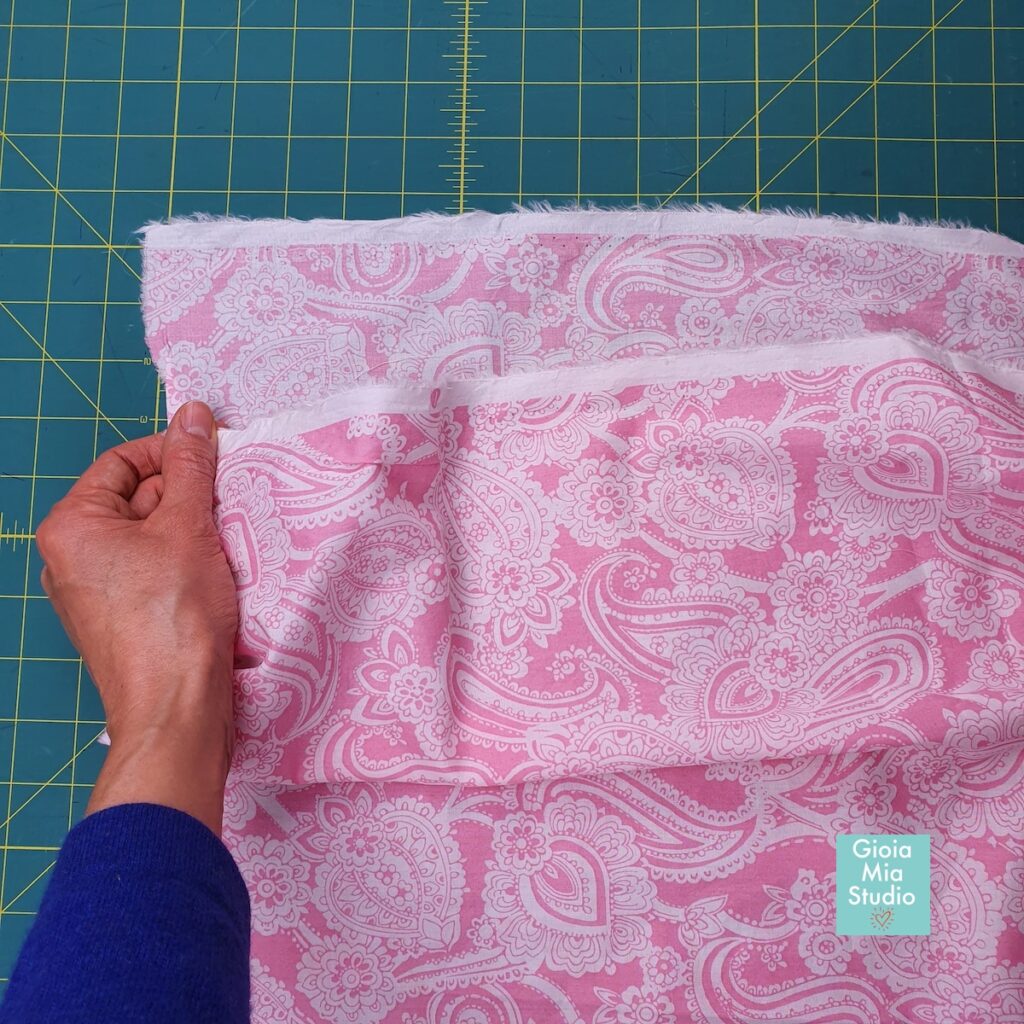


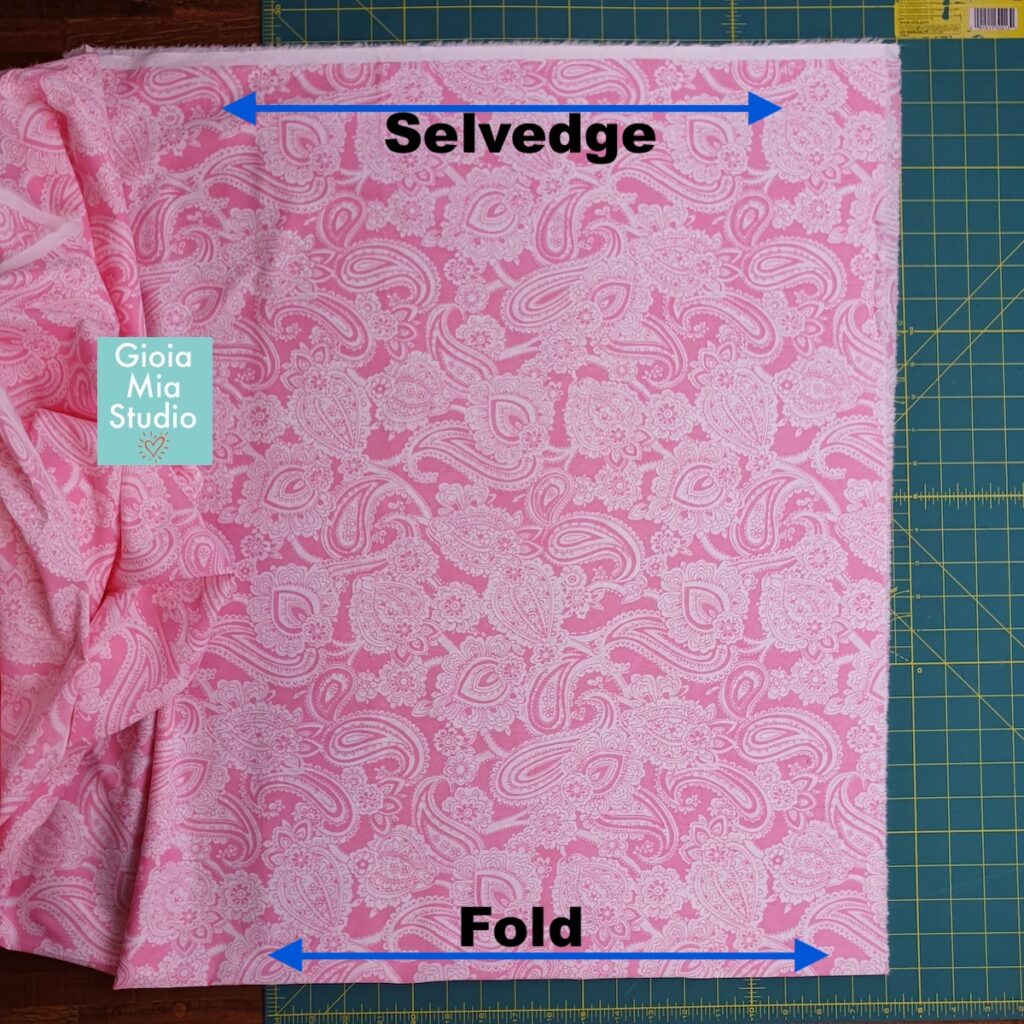
Why does Width of Fabric (WOF) matter?
Quilt instructions will tell you how to cut the fabric for a pattern. Often it is written like this example:
cut four – 2 1/2 strips WOF
or
cut six – 4 1/2 squares WOF
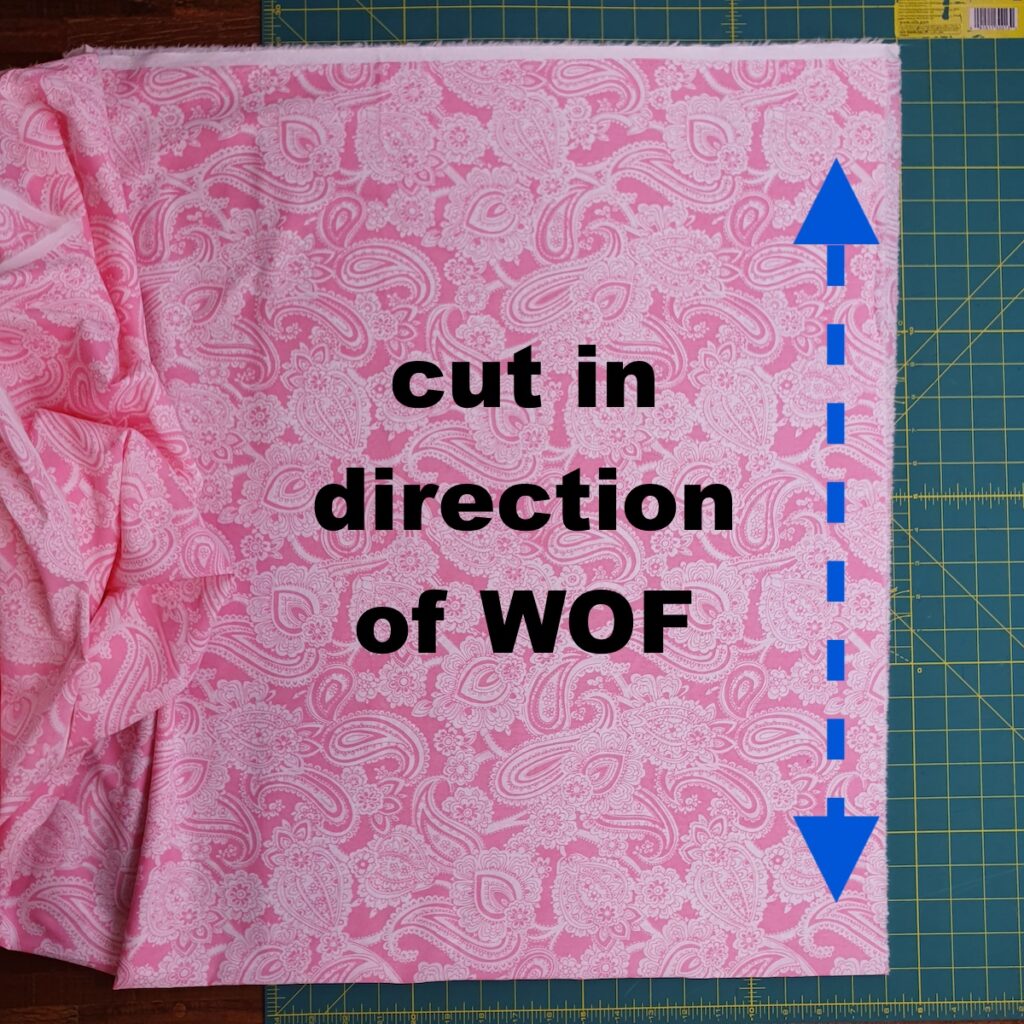

This direction is sometimes referred to as the Weft or Crosswise Grain.
Must I cut in the direction of the WOF?
No, you don’t have to cut in the direction of WOF. The reason to cut in the direction of the WOF is because the quilt pattern calls for it.
- the pattern might indicate WOF because of mathematics,
- the math may allow for more pieces to be cut out of the fabric
Bonus Information!
Understanding the Fabric Weave
Let’s state the obvious: fabric is woven. I know, you are saying, “duh!” Here’s the thing, depending on how you cut into the weave affects the quilt pieces.
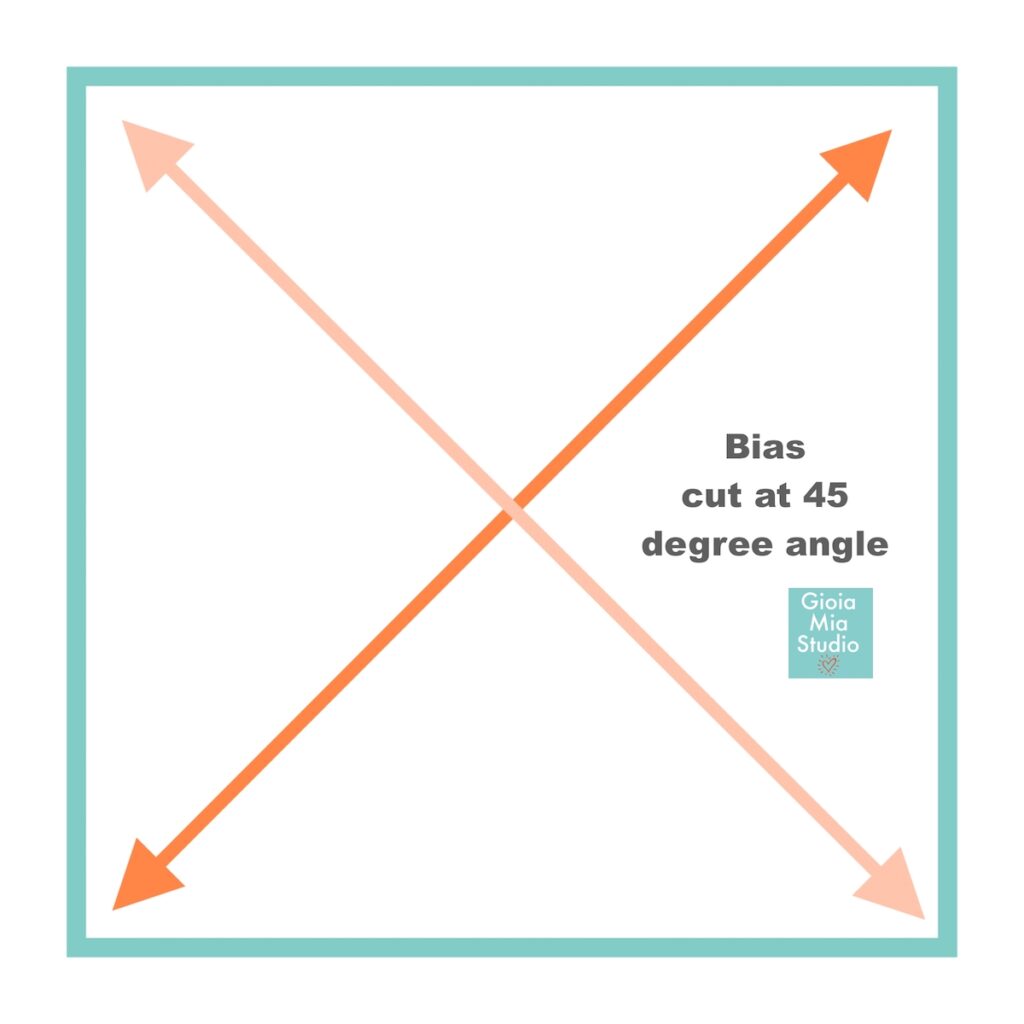
When fabric is cut on a 45 degree angle, this cut is on the bias. The weave on the bias becomes stretchy. It easily stretches! The worst part is that it won’t return to a nice firm line. Bias cut fabric once stretched, remains stretched. Basic quilting needs that nice firm line.
Along Selvedge, The Lengthwise edge, The Warp, The Straight Grain,
There are so many names for one thing! I understand and I feel your pain. Don’t worry! Bookmark this page to have a handy list to reference when you quilt.

Can I cut in the direction of the straight grain? (the straight grain or warp or lengthwise)
Absolutely! You might even like it better than the WOF (width of fabric)! There are benefits to cutting in the direction of the straight grain.
- Usually the movement of printed fabric is in the direction of lengthwise grain.
- The weave of the straight grain is a bit stronger than the WOF.
Can I use the selvedge?
No. When you arrive to the selvedge, slice it off. Don’t include it in your quilt piece or you will regret it.
- Selvedge is thicker
- too stiff
- difficult to sew through
Have a joyful week!
From Rome with Love,
Rachel
Leave a Comment
Do you like to cut your quilt pieces in the direction of WOF or in the direction of the straight grain?
